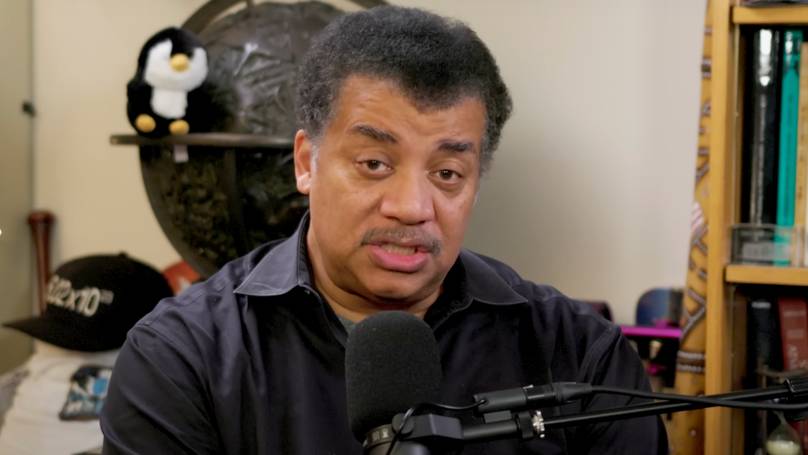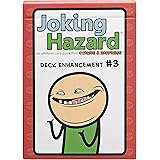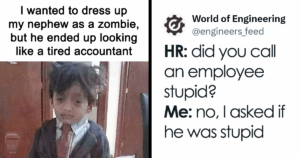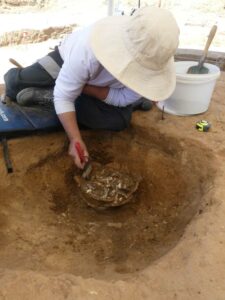“Unearthing Earth’s Hidden Shield: NASA’s Bold Plan to Outsmart a Potential ‘City Killer’ Asteroid!”
Picture this: A colossal rock hurtling through space, with the potential to wreak havoc on Earth, just a few years away from a possible close encounter. Sounds like the plot of a sci-fi blockbuster, right? Well, hold onto your helmets, because Neil deGrasse Tyson, the legendary astrophysicist, is here to break it down for us. He’s just shared insights on how NASA and other planetary defense agencies could possibly deflect the impending ‘city killer’ asteroid called 2024 YR4—a name that just screams “not your average space rock.” As NASA revises the odds of this cosmic behemoth colliding with our planet and even the Moon, concerns rise. So, what does this mean for us, and how worried should we be about spending Christmas in an apocalyptic scenario? Let’s dive into the celestial drama! LEARN MORE.
Legendary scientist Neil deGrasse Tyson has explained how NASA and other planetary defense bodies could deflect the potential ‘city killer’ asteroid known as 2024 YR4.
And it comes as the space agency itself has once again updated the odds of the cosmic lump of rock hitting the planet as well as the Moon orbiting the place we call home.
Earlier this month, NASA issued an update on an asteroid known as 2024 YR4 given that its chances of hitting Earth had increased since it was first discovered floating through space in December last year.
The Asteroid Terrestrial-impact Last Alert System (ATLAS) discovered the rock, with estimates as high as 3.1 percent when it came to the odds of it hitting Earth when it passes by the planet in the year of 2032 – just days before Christmas.
But what happens if it is given a flight path that does actually hit Earth?
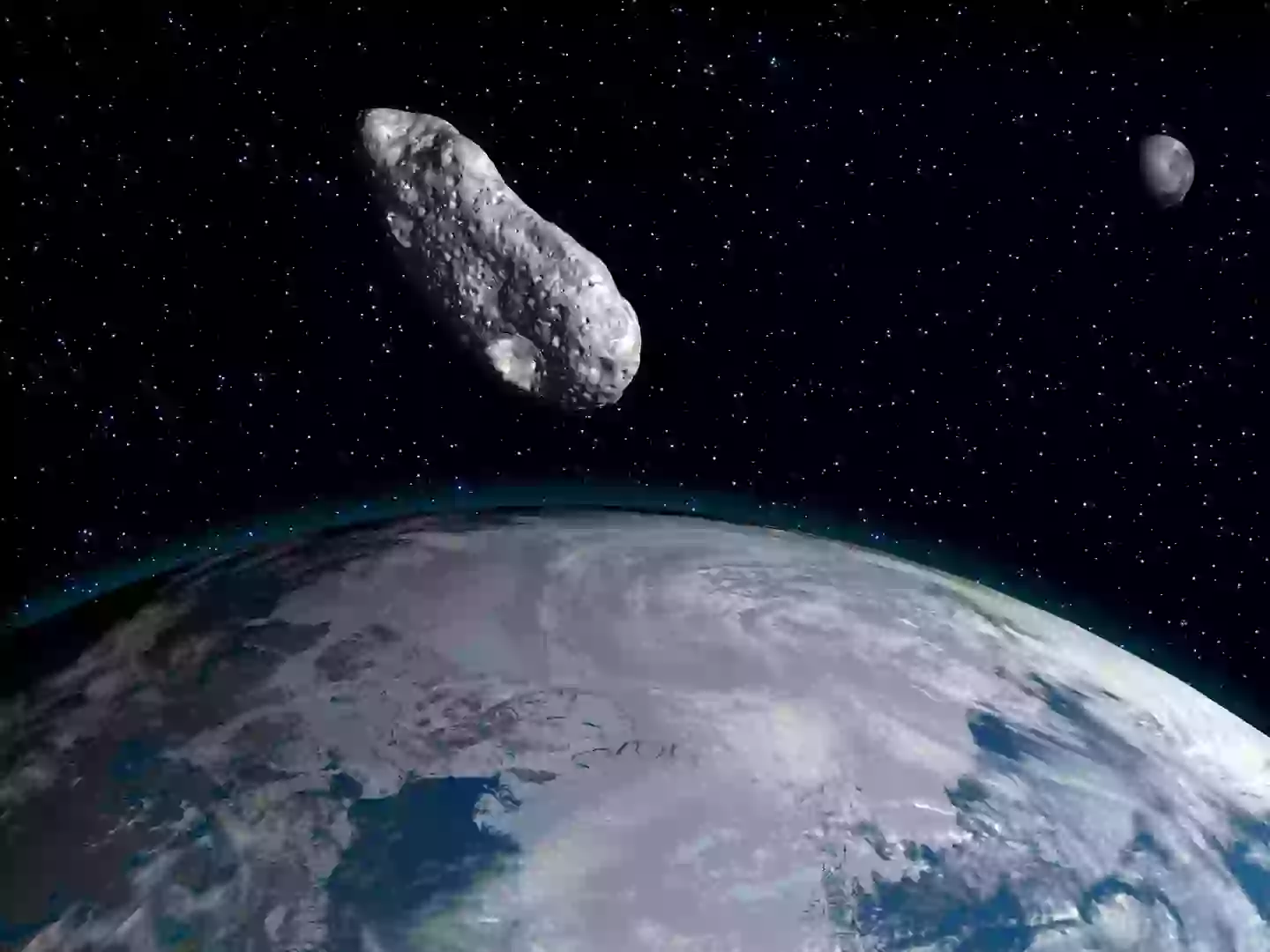
Could it hit? There is a small chance (Getty Stock Image)
What can NASA do to an asteroid?
According to American astrophysicist Tyson, NASA is well on its way to knocking asteroids off path or destroying them in space.
“You may remember NASA had a mission to an asteroid to try to deflect its orbit. Sort of as a test case in case something might be headed our way,” Tyson said in a YouTube clip shared to the StarTalk channel this week.
“Now that it has done that, knows how to do it, learn that it was successful, it gives us a little more confidence going forward for any subsequent asteroid that’s discovered that might actually be headed our way.
“By the way any country that has a planetary defense office is perking up right now because of these risks that we now know and can track. In fact China, just as an example, didn’t have a planetary defense office until this asteroid’s risk was calculated.
“We can only be safer in this world if everyone thinks about this problem in a coordinated way, together.”
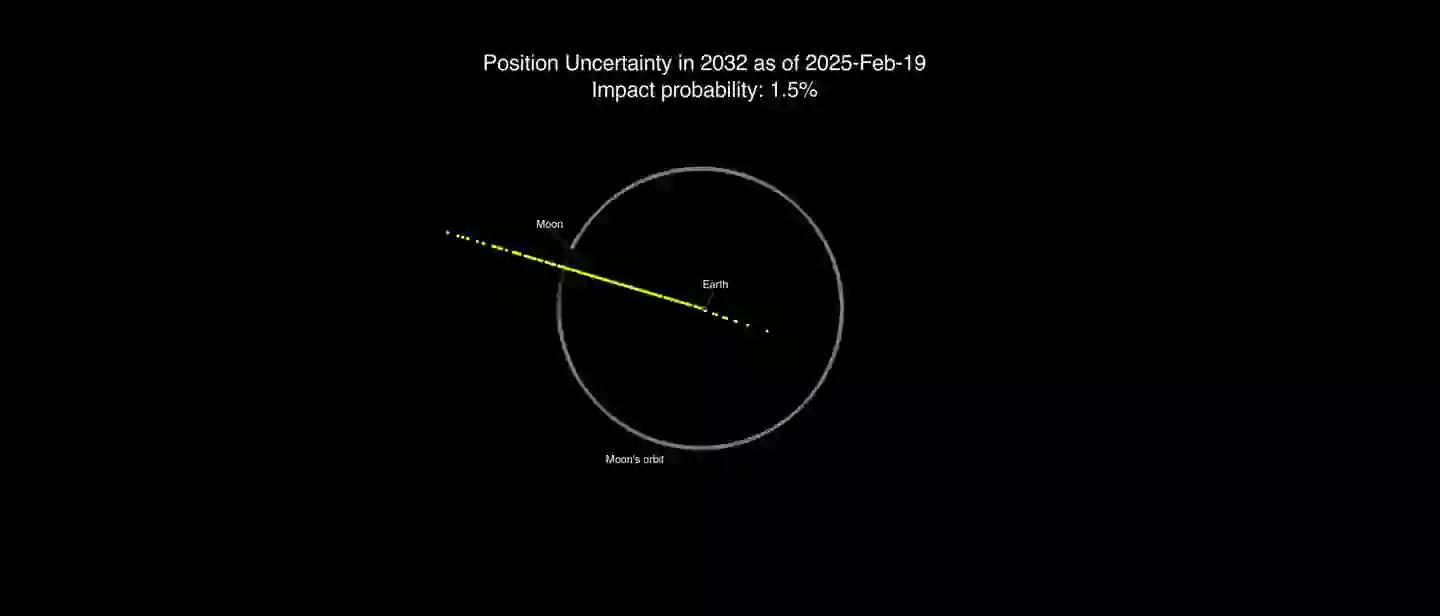
Every yellow dot shows where the asteroid 2024 YR4 could pass Earth (NASA JPL/CNEOS)
NASA’s asteroid explosion mission
Back in 2022, NASA launched its Double Asteroid Redirection Test (DART) mission to test a new form of defending the planet if a killer asteroid was ever to head towards our planet.
Costing a whopping $324 million, the experiment looked at establishing how much momentum would be necessary to deflect an asteroid when hitting it head-on.
The spacecraft smacked directly into the asteroid of choice, called Dimorphos. This was a minor-planet moon of the asteroid called Didymos. Dimorphos posed zero threat to Earth during the experiment, with it being around 11 million kilometres from our planet when struck.
The experiment was an overwhelming success, shortening its orbit of Didymos by 32 minutes when the experiment had hoped to shorten it by 73 seconds.
NASA’s latest update on the asteroid
It’s good news for the Earth and bad news for the Moon when it comes to 2024 YR4.
According to the latest calculations released on Thursday (20 February), the chance of an impact with the Earth is now right down to 0.28 percent. On the flip side, it is up to one percent for the Moon.
Molly Wasser, Outreach Coordinator for NASA’s Goddard Space Flight Center, said: “Observations made overnight on February 19 to 20 of asteroid 2024 YR4 have further decreased its chance of Earth impact on December 22, 2032, to 0.28 percent.
“NASA’s planetary defense teams will continue to monitor the asteroid to improve our predictions of the asteroid’s trajectory. With this new data, the chance of an impact with the Moon increased slightly to one percent.”
How are asteroids mapped and threat levels categorised?
When we look at mapping asteroid 2024 YR4, Tyson explains how it is currently rated as a ‘three’ on the Torino Scale. This is a way that scientists categorise the threat that objects such as asteroids and comets pose to Earth.
According to the scale, a ‘three’ means: “A close encounter, meriting attention by astronomers. Current calculations give a one percent or greater chance of collision capable of localised destruction.
“Most likely, new telescopic observations will lead to re-assignment to Level 0. Attention by public and by public officials is merited if the encounter is less than a decade away.”
Astronomer Rick Binzel created the Torino Scale. Explaining his creation, Binzel said: “The Torino Scale is a 10 point scale from zero to 10. Zero is really good and 10 is a really bad day for the dinosaurs.”
On 2024 YR4, Binzel says that ‘if it were to strike the Earth it would be a localised event’. So while devastation could be caused in the area around the impact, it would not be an end of civilisation incident by any means.

